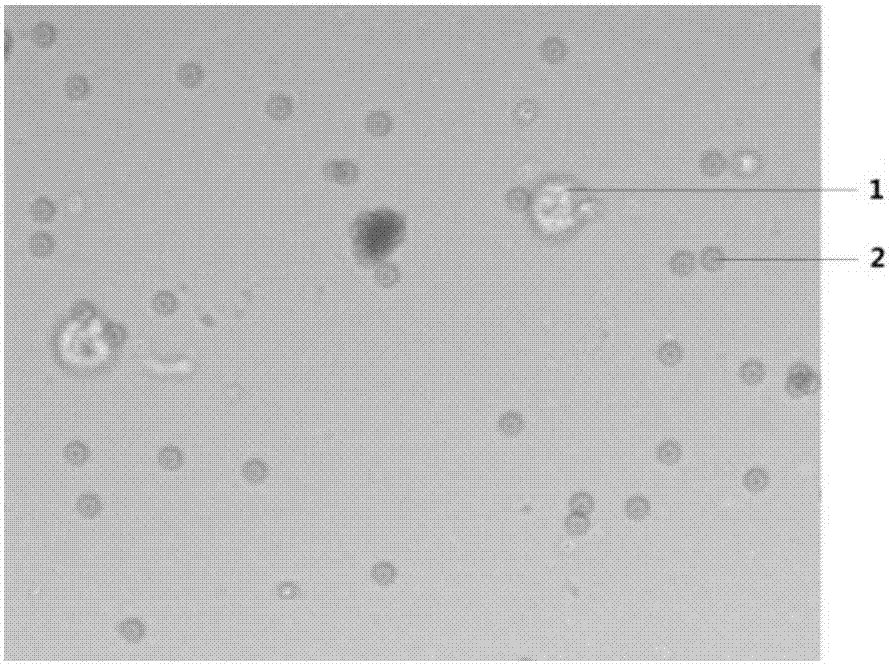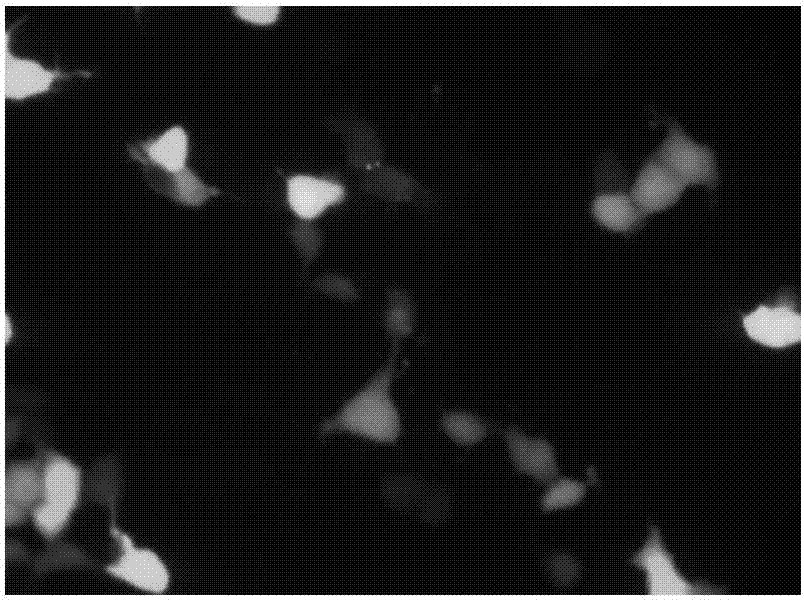Method for separating placental trophoblastic cells by using immunomagnetic bead process
A technology of trophoblast cells and immunomagnetic bead method, which is applied in the field of cell sorting of immunomagnetic bead method, can solve the problems of tediousness, low efficiency and time, and achieve the effect of high capture efficiency, convenient operation, and easy operation
- Summary
- Abstract
- Description
- Claims
- Application Information
AI Technical Summary
Problems solved by technology
Method used
Image
Examples
Embodiment 1
[0035] Synthesis and Coupling Efficiency Detection of HLA-G Coupling Immunomagnetic Beads
[0036] (1) Take 5mg tosyl magnetic beads (Thermo fisher M-270Epoxy (Product No. 14301)), washed twice with PBS solution (1ml each time), suspended in 100μl PBS solution.
[0037](2) Add 100 μl of HLA-G antibody and 100 μl of 3M (NH 4 ) 2 SO 4 The solution was vortexed and incubated at 37°C with tilted shaking for 24 hours to avoid the magnetic beads from settling.
[0038] (3) Wash the magnetic beads incubated in (2) 4 times with 0.1% BSA / PBS solution (1 ml each time), and suspend the magnetic beads in 1 ml 0.1% BSA / PBS solution for later use.
[0039] (4) Take 10 ul of the solution containing HLA-G antibody before and after coupling, use Quibt 3.0 Fluorometer (Life Technologies) to measure the protein content before and after the reaction, and calculate the HLA-G antibody content with successful coupling according to the difference method. The results are shown in the following t...
Embodiment 2
[0043] Culture and counting of JEG-3 cell samples
[0044] (1) JEG-3 cells were cultured and passaged in DMEM (containing 10% FBS, 1% penicillin-streptomycin double antibody solution), and JEG-3 cells were sampled during the rapid growth period for experiments;
[0045] (2) Get the JEG-3 cells in a dish (1), digest the JEG-3 cells with 0.25% trypsin digestion solution, wash the JEG-3 cells twice with PBS, collect the JEG-3 cells by centrifugation at 2500g for 5min, and dissolve the JEG-3 cells -3 Cells were suspended in 1ml PBS solution;
[0046] (3) Take 10 μl of the JEG-3 cell suspension collected in (2), dilute it 1000 times, and count the JEG-3 cells accurately with a hemocytometer. The statistics of the three counting results are shown in the table below.
[0047] JEG-3 cell count results
[0048]
Embodiment 3
[0050] Separation Efficiency Test of Immunomagnetic Beads Method
[0051] (1) Take 1.16 μl of JEG-3 cell suspension (1000 cells), add PBS solution to make up to a total volume of 100 μl;
[0052] (2) Add 200 μl of the HLA-G coupled magnetic bead suspension prepared in Example 1, and incubate at 37° C. for 2 hours with tilting shaking;
[0053] (3) Wash the magnetic bead-cell complex incubated in (2) twice with PBS solution, 0.5ml of PBS solution each time, collect the magnetic beads on the magnetic stand to remove the supernatant, add 100ul PBS solution to resuspend the magnetic beads - cell associations;
[0054] (4) Observe and distinguish the cells in the magnetic beads under a microscope, count the number of cells with a hemocytometer, the results are shown in the table below, and take pictures, the state of the magnetic bead-cell complex is as attached figure 1 Shown:
[0055] Statistical results of recovery of JEG-3 cells by immunomagnetic bead method
[0056]
[...
PUM
 Login to View More
Login to View More Abstract
Description
Claims
Application Information
 Login to View More
Login to View More - R&D
- Intellectual Property
- Life Sciences
- Materials
- Tech Scout
- Unparalleled Data Quality
- Higher Quality Content
- 60% Fewer Hallucinations
Browse by: Latest US Patents, China's latest patents, Technical Efficacy Thesaurus, Application Domain, Technology Topic, Popular Technical Reports.
© 2025 PatSnap. All rights reserved.Legal|Privacy policy|Modern Slavery Act Transparency Statement|Sitemap|About US| Contact US: help@patsnap.com



